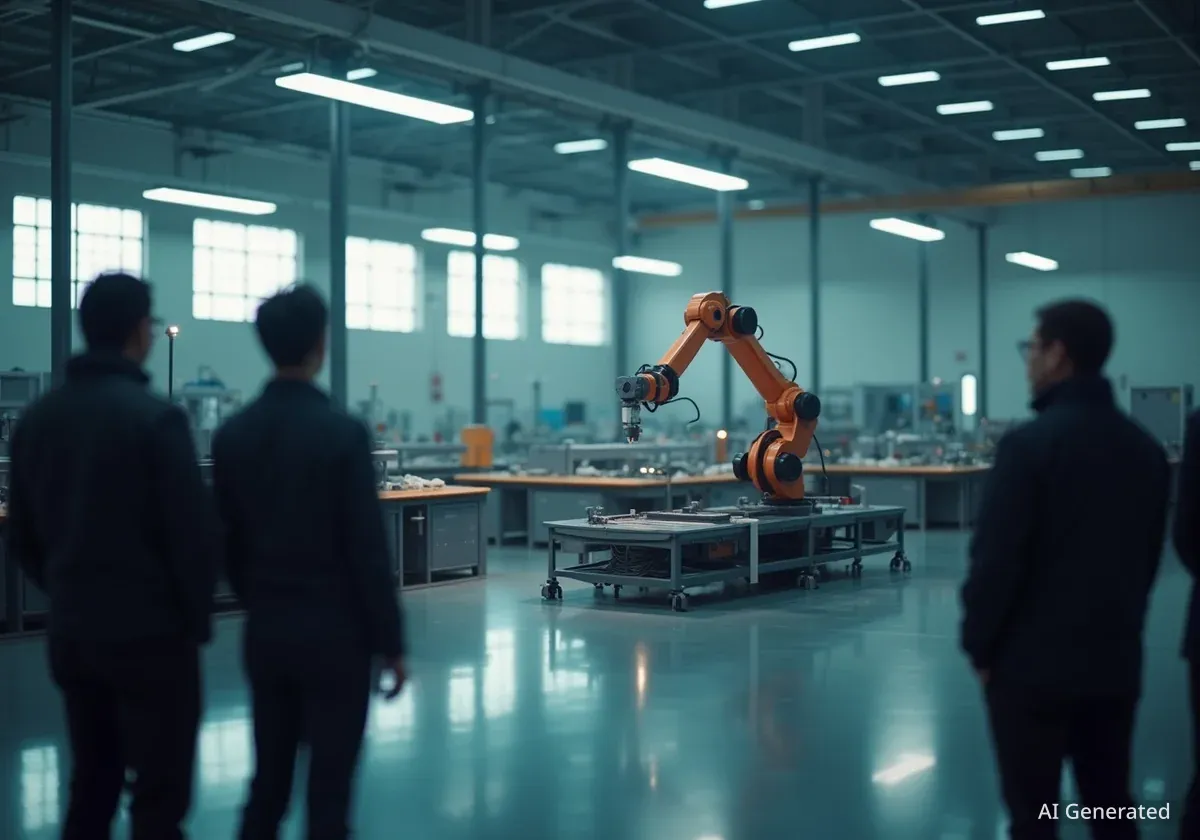A new executive order signed on September 19, 2025, introduces a substantial $100,000 fee for each H-1B visa, a program widely used by U.S. companies to hire specialized foreign workers. This policy change is expected to significantly alter hiring strategies in the technology sector and other industries reliant on international talent.
The move could accelerate two major trends already underway: the offshoring of skilled jobs to other countries and the increased corporate investment in artificial intelligence (AI) to automate tasks previously performed by these workers. The policy's design, however, includes certain exemptions, suggesting a complex balancing act between restricting immigration and maintaining U.S. economic competitiveness.
Key Takeaways
- An executive order has established a new $100,000 fee for companies applying for H-1B specialty occupation visas.
- Analysts predict this will push companies to move jobs overseas and increase their use of AI automation.
- The policy is viewed as a significant step in a broader push to reshape U.S. immigration and labor rules.
- Exemptions within the order indicate potential concerns about the policy's impact on critical sectors and U.S. innovation.
The New H-1B Visa Landscape
The executive order, effective immediately, fundamentally changes the cost-benefit analysis for U.S. companies seeking to hire foreign professionals. The H-1B visa has long been a vital tool for firms, particularly in the tech industry, to fill roles where they face a domestic skills shortage.
By imposing a six-figure fee on top of existing legal and administrative costs, the new rule makes hiring foreign talent significantly more expensive. This financial pressure is designed to encourage companies to prioritize hiring American workers. However, many businesses argue that the talent pool for highly specialized roles in areas like software engineering and data science is global by nature.
Understanding the H-1B Visa Program
The H-1B visa is a non-immigrant visa that allows U.S. employers to temporarily employ foreign workers in specialty occupations. These occupations generally require a bachelor's degree or higher in a specific field. The program is capped annually, and demand has historically far exceeded the supply of available visas, leading to a lottery system for applicants.
The policy's impact will likely be felt most acutely by technology companies, consulting firms, and healthcare providers. These sectors are among the largest users of the H-1B program. For years, they have built global talent pipelines to fuel innovation and growth within the United States.
Accelerating Offshoring and AI Adoption
Faced with a steep increase in the cost of hiring foreign workers on U.S. soil, companies are expected to explore alternatives more aggressively. The two most prominent alternatives are offshoring and automation through artificial intelligence.
The Shift to Global Talent Hubs
Instead of bringing talent to the United States, companies may choose to establish or expand operations in other countries. Nations like Canada, India, and parts of Eastern Europe have become major technology hubs with skilled workforces and more favorable immigration policies. The new fee could make it more economically viable for a U.S. company to open a new engineering office in Toronto than to sponsor a visa for that same engineer to work in Silicon Valley.
The Financial Calculation
A senior software engineer's salary in the U.S. can range from $150,000 to over $250,000. While the $100,000 fee is a one-time cost, it represents a significant upfront investment that could otherwise be allocated to salaries, research, or other business operations. This changes the financial model for building teams.
This shift could lead to a long-term relocation of high-skilled jobs that were previously based in the U.S. While the policy aims to protect domestic jobs, it could inadvertently send entire projects and departments overseas where the necessary talent can be hired without the new financial burden.
AI as a Labor Alternative
The second major consequence is the likely acceleration of AI adoption. Companies may view the $100,000 visa fee as a capital expense that could be redirected toward developing or acquiring AI systems to perform tasks done by human workers.
"When the cost of a specific type of labor increases dramatically, businesses naturally look for substitutes. In today's world, the most powerful substitute for knowledge work is artificial intelligence," noted one technology analyst. "This policy might be the catalyst that pushes many companies to automate roles they were only considering automating in the future."
This trend is already visible in fields like software development, data analysis, and customer support, where AI tools are becoming increasingly capable. The new visa cost could justify larger investments in AI platforms that can write code, analyze data sets, or manage complex logistical challenges, reducing the need for new hires in these areas.
Economic Implications and Policy Loopholes
The administration's policy is presented as a measure to protect and create American jobs. The theory is that by making foreign labor more expensive, companies will be forced to hire and train U.S. workers. However, the economic reality may be more complex.
Critics argue that if a skills gap truly exists, companies will not be able to simply substitute domestic workers for highly specialized foreign talent overnight. Instead, they may be forced to slow down projects, reduce innovation, or move operations abroad, potentially harming U.S. competitiveness in the long run.
Interestingly, the executive order reportedly contains specific exemptions and waivers. While the full details are still being analyzed, these loopholes suggest a recognition within the government that a blanket restriction on foreign talent could have negative consequences. These exemptions might apply to individuals with exceptional abilities, workers in critical defense industries, or researchers in fields deemed vital to national security.
The presence of these carve-outs indicates a difficult policy challenge: how to restrict immigration while ensuring the U.S. continues to attract the world's top talent needed to drive its economy and maintain its position as a global leader in technology and innovation. The effectiveness and ultimate impact of this new H-1B visa policy will depend heavily on how these competing interests are managed in the months and years to come.





